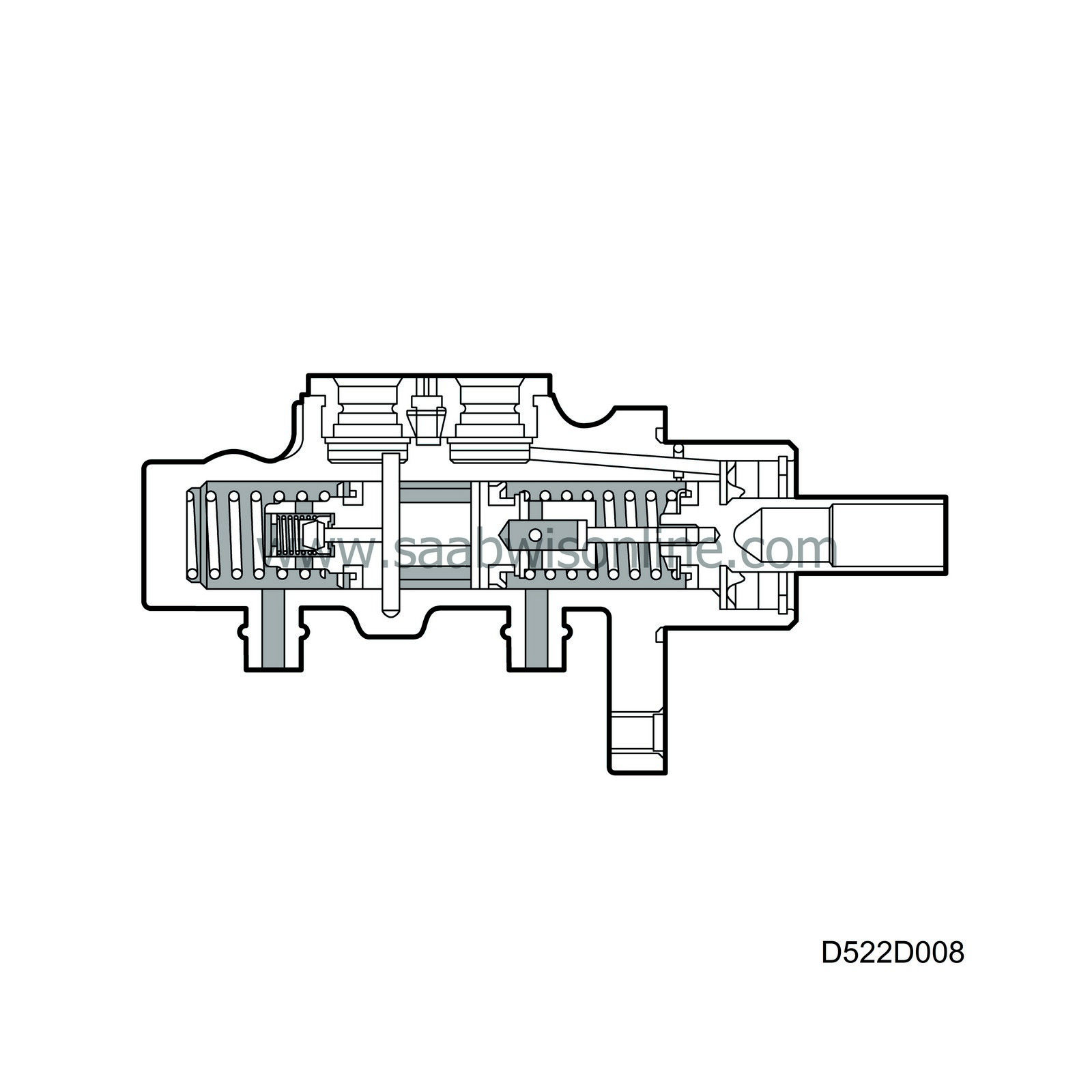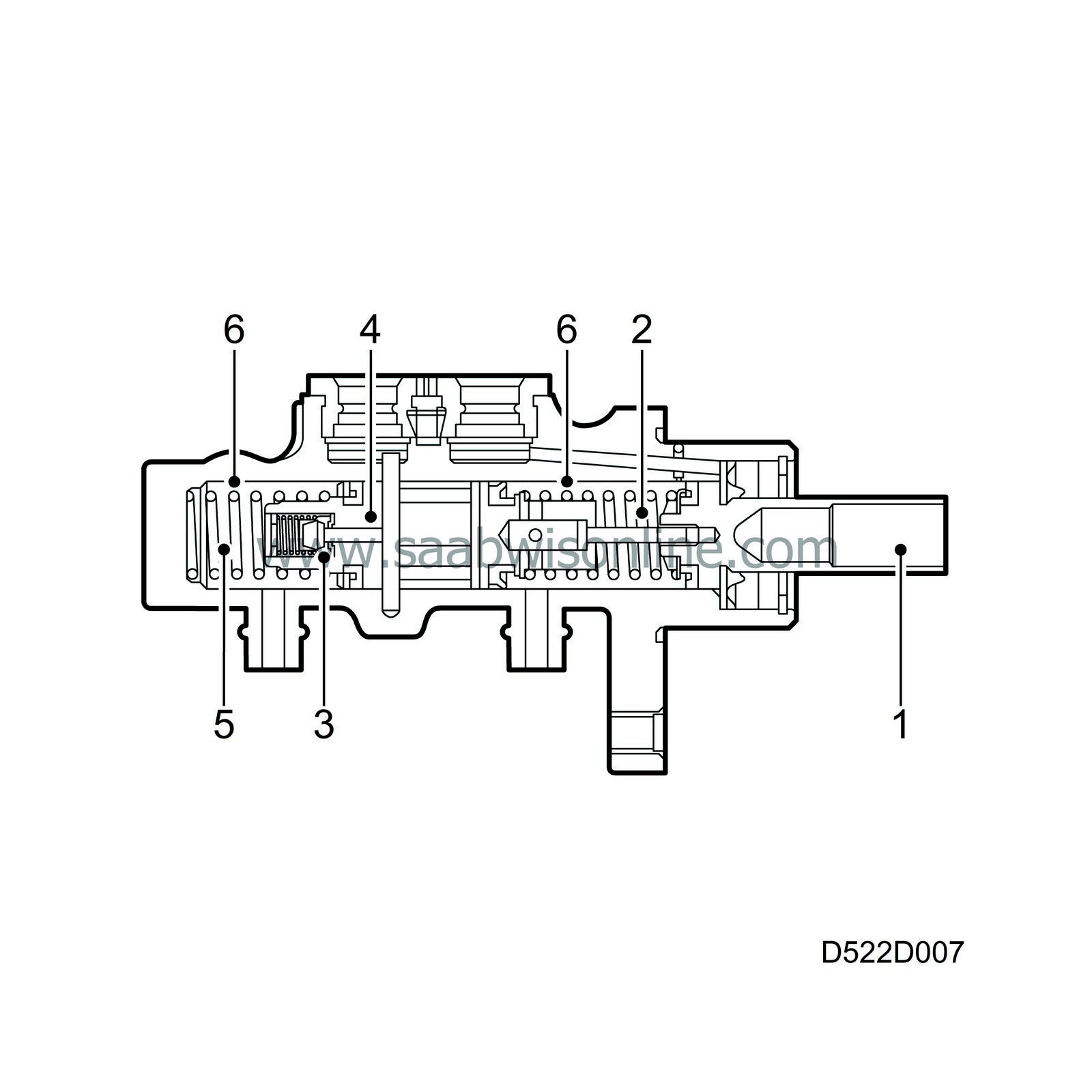Master cylinder, others
| Master cylinder, others |
| 1. |
Pushrod with primary piston
|
|
| 2. |
Pressure chamber (primary circuit)
|
|
| 3. |
Central steel valve
|
|
| 4. |
Secondary piston
|
|
| 5. |
Pressure chamber (secondary circuit)
|
|
| 6. |
Compression spring
|
|
The master cylinder consists of a tandem cylinder manufactured in steel.
As the car has two independent brake circuits, it also has one master cylinder with two independent pressure chambers. There are two pistons in the cylinder: one primary piston (closest to the brake pedal) and one secondary piston, each with a return spring. The secondary piston has a central valve of steel that opens a passage to the brake fluid reservoir in rest position.
From the master cylinder, two pipes (primary/secondary) run to the ABS unit (valve block) that, in turn, provides brake fluid to the wheel cylinders.
The brake fluid reservoir is mounted directly on the master cylinder.
| Rest (brakes off) position |

Master cylinder, rest position
No pressure
In rest position, the return springs press the pistons to their rear end positions. In this position, both return passages are open and the brake system is not under pressure. The backward movement is limited by a stop pin.
| Brake applied (both circuits operating) |

Master cylinder, brake applied (both circuits in operating)
No pressure
Servo pressure
When the brake pedal is depressed, the primary piston is pressed forward by the pushrod.
The return passage to the brake fluid reservoir closes and the pressure in front of the primary piston increases. The pressure also affects the secondary piston, which is pushed forward and its return passage is also closed by the central valve. The hydraulic pressure in the two brake circuits increases and, since the area of the pistons are the same, the pressure will be the same in both brake circuits. The pressure propagates throughout the brake system and affects the brake piston in each brake caliper. The brake pistons press the brake pads against the brake discs.
When the pedal is released, the pistons in the master cylinder are returned, opening the return passages. The pressure ceases and the piston in each brake cylinder takes up its rest position with the aid of the piston ring.
| Brake applied (one circuit inoperative) |

Main cylinder, brake applied (one circuit inoperative)
When the brake pedal is depressed and a leak has occurred in the primary circuit, for example, the primary piston is pressed forward by the pushrod until it acts mechanically on the secondary piston. The secondary piston closes the return passage with the central valve and hydraulic pressure builds up in the secondary circuit only.
If their is a leak in the secondary circuit, the secondary piston is pushed forward and will bottom in the master cylinder. In both these cases, a longer pedal travel will be required to obtain the desired braking power.



